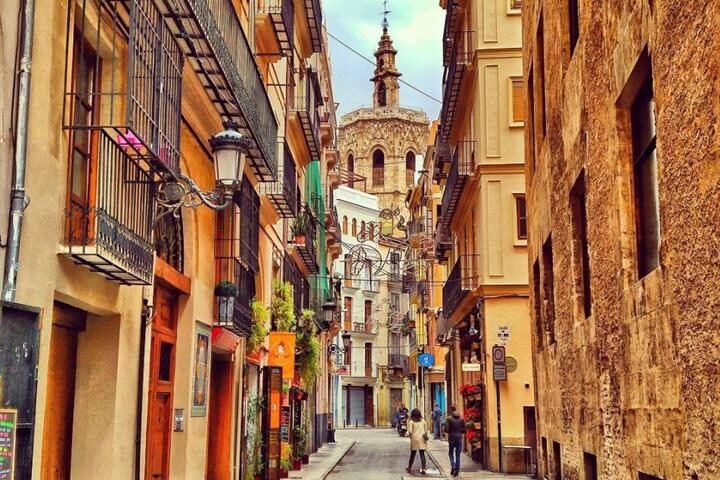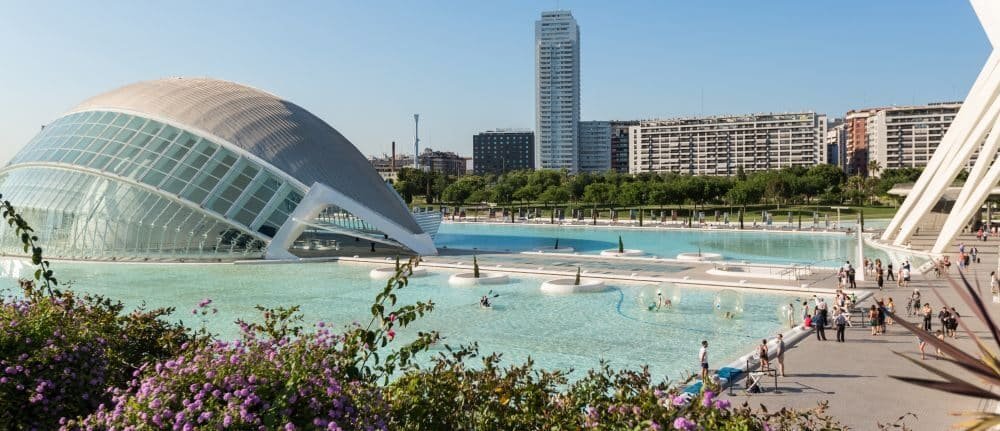Navigating Professional Life in Valencia: An International Worker’s Survival Guide
When I first landed in Valencia with my business dreams tucked neatly beside my sunglasses, I had no idea that this sun-drenched Mediterranean city would teach me the art of growing a successful company without sacrificing life’s pleasures.
Like many expats seeking a fresh start in Spain, I was drawn by the promise of a better quality of life, yet worried about maintaining professional momentum in a city famous for its afternoon siestas.
What I discovered instead was a thriving international community where morning client calls seamlessly blend with beachside lunches, and business networking happens just as easily over horchata in Plaza de la Reina as in conventional office spaces.
In this coastal hub, where ancient traditions meet modern innovation, thousands of expats have found that success doesn’t always wear a suit and tie—sometimes it sports flip-flops and takes afternoon breaks.
As someone who’s navigated the journey from newcomer to established business owner, I’ve learned that Valencia’s laid-back atmosphere isn’t just a lifestyle choice—it’s a competitive advantage that can actually enhance your professional growth.
In this guide, I’ll share how I’ve built a thriving business whilst embracing the city’s famous quality of life, proving that you don’t need to choose between career ambition and well-being.
Adapting to Valencia’s Unique Business Rhythm
When I first arrived in Valencia, one of the most significant adjustments wasn’t the language or bureaucracy—it was the daily schedule that seemed to dance to its own Mediterranean beat.
Picture this: whilst many international companies maintain the familiar 9-to-5 (or rather 10-to-6) rhythm, traditional Valencian businesses follow a wonderfully different drumbeat.
The local workday often kicks off bright and early at 8 am, when the morning sun is gentle and the air is crisp with possibility.
Then comes a cherished tradition that caught me by surprise: “almuerzo time” (roughly between 10:30 and 11:30), when work pauses for the famous bocadillo break—a hearty sandwich that’s practically an institution here.
This mid-morning feast, often enjoyed at local bars with colleagues over animated conversations, isn’t just about food—it’s what powers Valencianos through their notably long mornings that stretch until 2 pm.
I’ve learned to appreciate how this substantial morning snack bridges the gap between breakfast and lunch, especially given that locals typically eat dinner as late as 9 or 10 pm. For more on Valencia’s cultural essentials, check out our city guide.
The afternoon schedule is perhaps the most striking difference for newcomers: lunch time spans from 2 pm until 5 pm, including the optional but widely respected siesta break.
However, it’s important to note that not everyone follows this traditional pattern—international companies and modern startups often opt for a more condensed schedule, typically running from 10 am to 6 pm with just an hour for lunch.
As a business owner, you have the flexibility to choose which rhythm suits you best—I’ve found that many expat entrepreneurs adopt a hybrid approach, combining elements of both schedules to maximise networking opportunities with both local and international clients. If you’re exploring the expat lifestyle in Valencia, you’ll find more tips here.
What I’ve come to appreciate most is how this unique timetable reflects Valencia’s commitment to work-life integration—it’s not about working less, but rather about distributing the workday in harmony with the city’s natural flow. Learn more about work-life balance in Valencia.
Bridging Time Zones: The Hidden Advantage of Being an International Entrepreneur in Valencia
As a business owner working with clients across different time zones, I’ve discovered that Valencia’s unique schedule can be both a challenge and a strategic advantage.
Whilst my Spanish friends are enjoying their leisurely lunch breaks, I’m often catching up with clients in London, Berlin, or Stockholm—a scheduling puzzle that initially seemed daunting but eventually revealed its perks.
My typical day starts at 9 am, aligning perfectly with the beginning of the business day in most European countries, whilst still allowing me to enjoy Valencia’s morning tranquility.
Instead of following the traditional Spanish almuerzo break, I often schedule my international client calls during this time—when my European clients are fully operational and seeking mid-morning meetings.

I’ve adapted to taking a shorter lunch break, usually from 2 pm to 3 pm, which allows me to maintain momentum with international projects whilst still experiencing a taste of Valencia’s famous lunch culture.
The real advantage emerges around 6 pm when I wrap up my workday—just as my Spanish counterparts are heading into their final meetings, I’m free to enjoy Valencia’s evening offerings, from beach walks to terrace dinners.
This schedule has created an unexpected sweet spot: my mornings and early afternoons align with international business hours, whilst my evenings are free to network with local entrepreneurs who are still in their offices until 8 pm.
I’ve learned to use calendar apps that display multiple time zones, making it easier to schedule calls without reaching for a calculator—a small but crucial detail when juggling clients from Stockholm to Dubai.
Some days, I might start earlier to accommodate Asian clients or end later for American ones, but the flexibility of being my own boss means I can adjust without sacrificing Valencia’s quality of life.
The key lesson I’ve learned is that being out of sync with the local business rhythm isn’t a disadvantage—it’s an opportunity to create a schedule that serves both your international business needs and your desire to embrace the Spanish lifestyle.
Mastering the Global Time Dance: Client Management Across Time Zones
When I started managing international clients from Valencia, my calendar looked like a complex puzzle of time zone calculations and awkward meeting slots.
Now, after years of refinement, I’ve developed a system that keeps both my business flowing and my work-life balance intact. For remote work insights, check AI consulting services for digital businesses.
The first rule I’ve established is setting clear communication windows for different regions—European clients know they can reach me during their standard business hours, whilst Asian clients understand I’m available for early morning calls.
I’ve learned to batch my client communications by region: mornings might focus on Asian clients, mid-day on European ones, and occasional late afternoons for US-based projects.
Tools have become my best allies—I use World Time Buddy to visualise overlapping business hours, and Calendly set to specific time zones to let clients book meetings without the confusion of manual time conversion.
One of my most successful strategies has been the ‘time zone buffer’—I block out specific days for different regions, rather than trying to juggle multiple time zones in a single day.
For instance, Tuesdays and Thursdays are my ‘European days’ with calls scheduled between 9 am and 5 pm CET, whilst Wednesdays might start early for Asian clients and end later for American ones.
I’ve found that being transparent about my location and working hours has actually strengthened client relationships—many appreciate the cultural diversity I bring to our interactions and respect the boundaries I’ve set. For more on building relationships, see networking strategies for global entrepreneurs.
The siesta hours (2 pm – 5 pm local time) often become my ‘power hours’ for focused work with minimal interruptions, as most European clients are winding down their day.
However, the real challenge lies in adapting these strategies to your specific situation, as every expat entrepreneur faces unique circumstances based on their primary market.
If you’re working with US clients, you might find yourself scheduling calls for 4 pm Spanish time to catch the early birds on the East Coast, or even working into the evening to align with West Coast business hours. For insights on international SEO, see global SEO solutions.
UK-based entrepreneurs often discover a hidden advantage—Spain’s later schedule means you can enjoy a morning walk in the sun before your British clients have finished their first cup of tea.
French business owners face a particular challenge during the sacred Spanish lunch break, as their clients are typically at their most active between 2 pm and 4 pm CET, precisely when local Spanish colleagues are unavailable for collaboration.
Finding Your Own Rhythm: A Personal Journey
The beauty of being an entrepreneur in Valencia lies in the freedom to craft your own schedule—one that honours both your business needs and your desired lifestyle.
Some expats choose to embrace the Spanish timetable fully, whilst others maintain their home country’s working hours. For practical tips, read Living in a Flat in Valencia: A Pragmatic Overview.
Many, like myself, create a hybrid schedule that cherry-picks the best of both worlds—perhaps taking advantage of quiet morning hours for focused work, enjoying a shorter lunch break than locals, but finishing early enough to join the evening paseo along the beach.
The key isn’t to force yourself into any predetermined schedule, but rather to find a rhythm that serves your business whilst allowing you to enjoy the unique quality of life that drew you to Valencia in the first place.
After all, isn’t that the reason many of us chose this sunny corner of Spain—to prove that successful business and joyful living can go hand in hand? For more on adapting to new cultures, see cultural differences in multilingual websites.
Frequently Asked Questions
How can I network with local businesses when I’m busy with international calls during traditional Spanish networking hours?
Consider attending early morning networking events, such as ‘Business Breakfast’ meetups that happen before the workday begins (8:00-9:30 am). Many international business groups in Valencia organise these specifically for entrepreneurs juggling multiple time zones. Additionally, schedule one evening per week for local networking, perhaps choosing a day when you have fewer international commitments.
I can’t make it to the traditional Spanish lunch meetings that seem crucial for business relationships. What alternatives do I have?
Suggest breakfast meetings at 9 am or ‘merienda’ (afternoon tea) meetings around 5:30-6:30 pm. Many Spanish professionals appreciate these alternative times, especially those who also work with international clients. You might also consider hosting occasional weekend brunches or informal Friday evening gatherings that combine business and social networking.
How do I explain my unconventional schedule to potential Spanish clients or partners without seeming unprofessional?
Frame your international schedule as a strength—explain how your global connections can benefit local partners through expanded business hours and international market insights. Be transparent about your availability and emphasise your flexibility for important meetings. Many Spanish businesses are increasingly interested in international markets and appreciate partners with global experience.
I’ve heard relationships are crucial in Spanish business culture. How can I build these when I’m not following the traditional Spanish business schedule?
Focus on quality over quantity in your local business interactions. Attend major industry events and local business fairs, which often have flexible hours. Join professional WhatsApp groups and LinkedIn communities where you can maintain connections digitally. Consider participating in weekend business and cultural events, which are common in Valencia and perfect for relationship building.
My Spanish colleagues often suggest impromptu meetings during their afternoon work hours (5-8 pm), but that’s when I’m wrapping up my international workday. How can I manage this cultural difference?
Set clear boundaries whilst offering alternatives. Explain your schedule upfront and suggest morning meetings between 9-11 am, which is often a productive time for Spanish professionals before their almuerzo break. For important impromptu discussions, offer a quick video call instead of a full meeting, or suggest meeting the following morning. Many Spanish professionals are becoming more flexible with international schedules and will appreciate your proactive approach to finding mutually convenient times.






